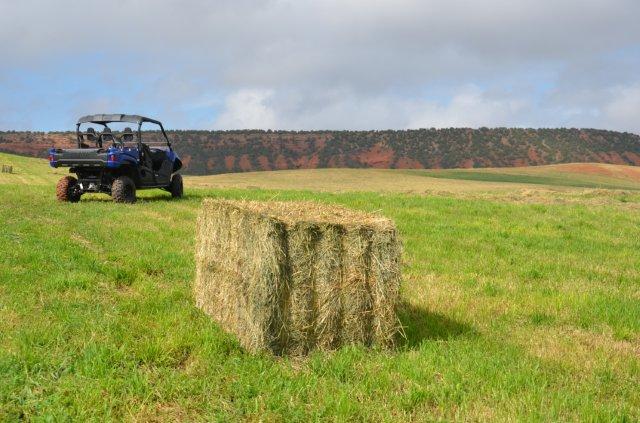Harvested acres of forage in the U.S. peaked in 2005, just before the advent of ethanol prompted a major move of crop production acreage from forage into corn. With the U.S. beef industry poised to enter an expansion phase, will we see a shift the other way?
April 5, 2014

Which comes first when rebuilding – forages or cows? Asked another way, will more forage acreage bring about more cows? Or do more cows ultimately mean more ground committed to forages? Either way, the outcome is the same: more forage ground is necessary to support a larger cowherd over time.
Hay production serves as the backbone for most cow operations in the U.S. to make it through winter and/or summer deficits. The largest driver of changing hay supply over the years has been a significant reduction in acres committed to production. The accompanying graph derived from Livestock Marketing Information Center data depicts that shift.
The illustration represents rolling five-year averages of harvested acres committed to hay production. Five-year averages are utilized because some ground comes and goes depending upon annual weather conditions; e.g., some years a pasture may be hayed, other years it may only be grazed. What’s most important here is the overall trend.
The peak of that rolling average occurred in 2005 (just prior to the onset of the ethanol era) at nearly 63 million acres. That level has since declined to 58 million acres in 2013, and represents a loss of 4.95 million acres. Much of the shift has occurred because of a shift away from grass to corn.
That’s best represented by considering that the Corn Belt’s acreage devoted to forage production equaled 13.7 million acres in 2005, but dropped to 11.8 million acres in 2013 – a decline of 1.9 million acres. At the same time, the Great Plains region’s largest hay acreage was also in 2005 (18.5 million acres) but drifted down to 16.4 million acres – a setback of 2.1 million acres. The two regions combined explain 80% of the nation’s shift during that eight-year period.
Meanwhile, the Northeast, Western and Southern Plains regions have seen declines of 500,000, 275,000, and 250,000 acres, respectively. Conversely, the Southeast region is the only area in which hay acreage increased (by 125,000 acres).
Where do you see hay acreage trends headed in the coming years? Will a renewed commitment to cows bring about more acres for hay in the U.S.? What are your perceptions of how this will transition in the coming years? Leave your thoughts below.
You Might Also Like:
10 Farm Trucks To Consider For 2014
Are Vegetable Proteins Equal To The Protein In Beef?
NPR Suggests Cattle Degrade The Environment
Harlan Projects $276/Cow Profit In 2014
You May Also Like



